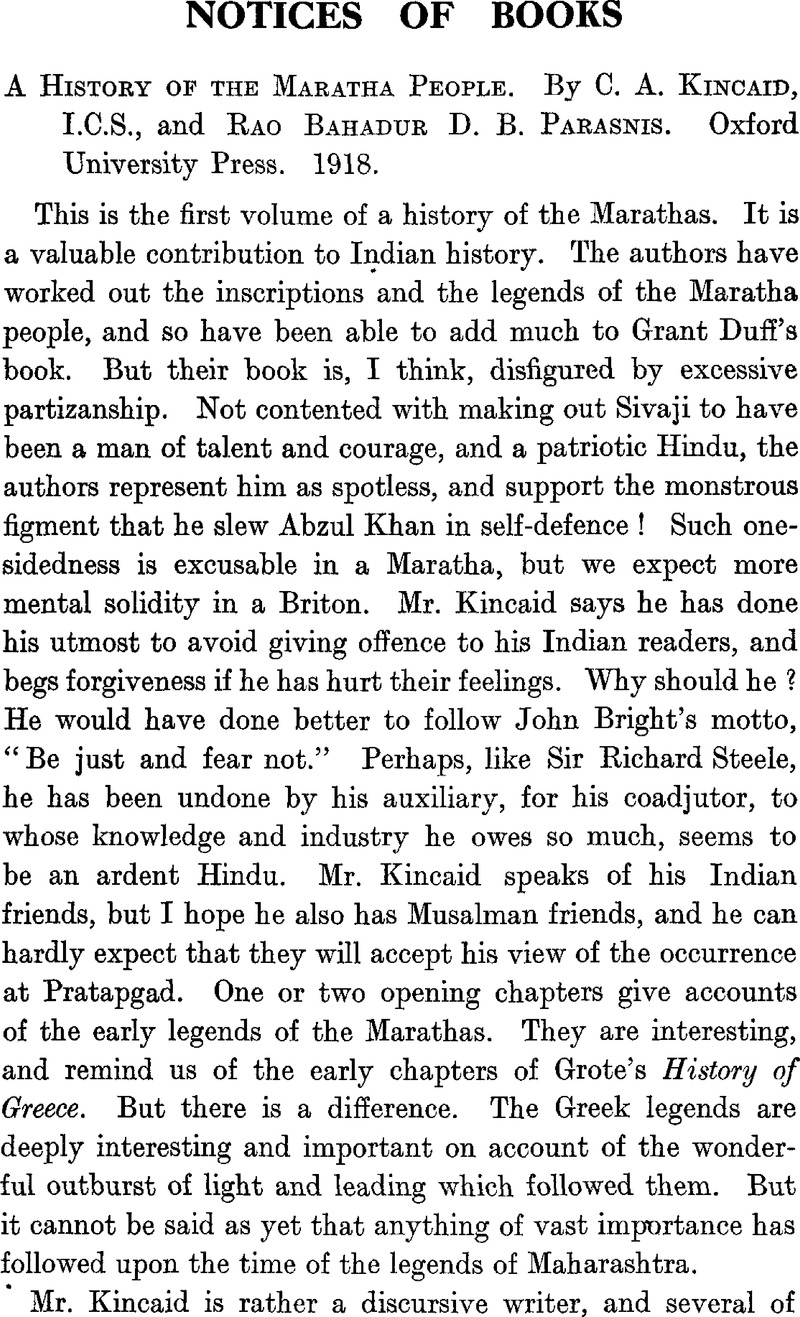No CrossRef data available.
Article contents
A History of the Maratha People. By C. A. Kincaid, I.C.S., and Rao Bahadur D. B. Parasnis. Oxford University Press. 1918.
Review products
Published online by Cambridge University Press: 15 March 2011
Abstract

- Type
- Notices of Books
- Information
- Copyright
- Copyright © The Royal Asiatic Society 1920
References
1 It is with pleasure and pride that I have found that my honoured father took, in his History of India, the same view as myself of the encounter between Afzal Khan and Sivaji. See the book, vol. i, p. 295, where Sivaji's act is called an atrocity, and where there is a cut showing the vāghnak or tiger's claws which Sivaji is said to have invented. It would be interesting to know if the weapon, now in the Indian Section of the South Kensington Museum, that is, the Victoria and Albert Museum, can be regarded as the actual instrument which perpetrated the murder. My father's book is in the main a history of the English in India, and I had forgotten till now that he had described the Pratapgad incident. No doubt he followed the account in Grant Duff's work.
It has been said that Sivaji's conduct in killing Afzal was no worse than Bruce's slaying of Comyn. No doubt there was a similarity between the two acts. But there is no evidence that Bruce's action was premeditated and elaborately planned. And it does not appear that either Bruce or the Scottish nation ever behaved hypocritically or attempted to deny the murder. Kilpatrick, Bruce's follower, at least had no qualms on the subject, and when Bruce was in doubt if he had really killed Comyn, went and completed the business. The nearest parallel to Sivaji's conduct seems to be the Biblical story of the killing of Amasa by Job. In both cases there was an embrace followed by a stab.


